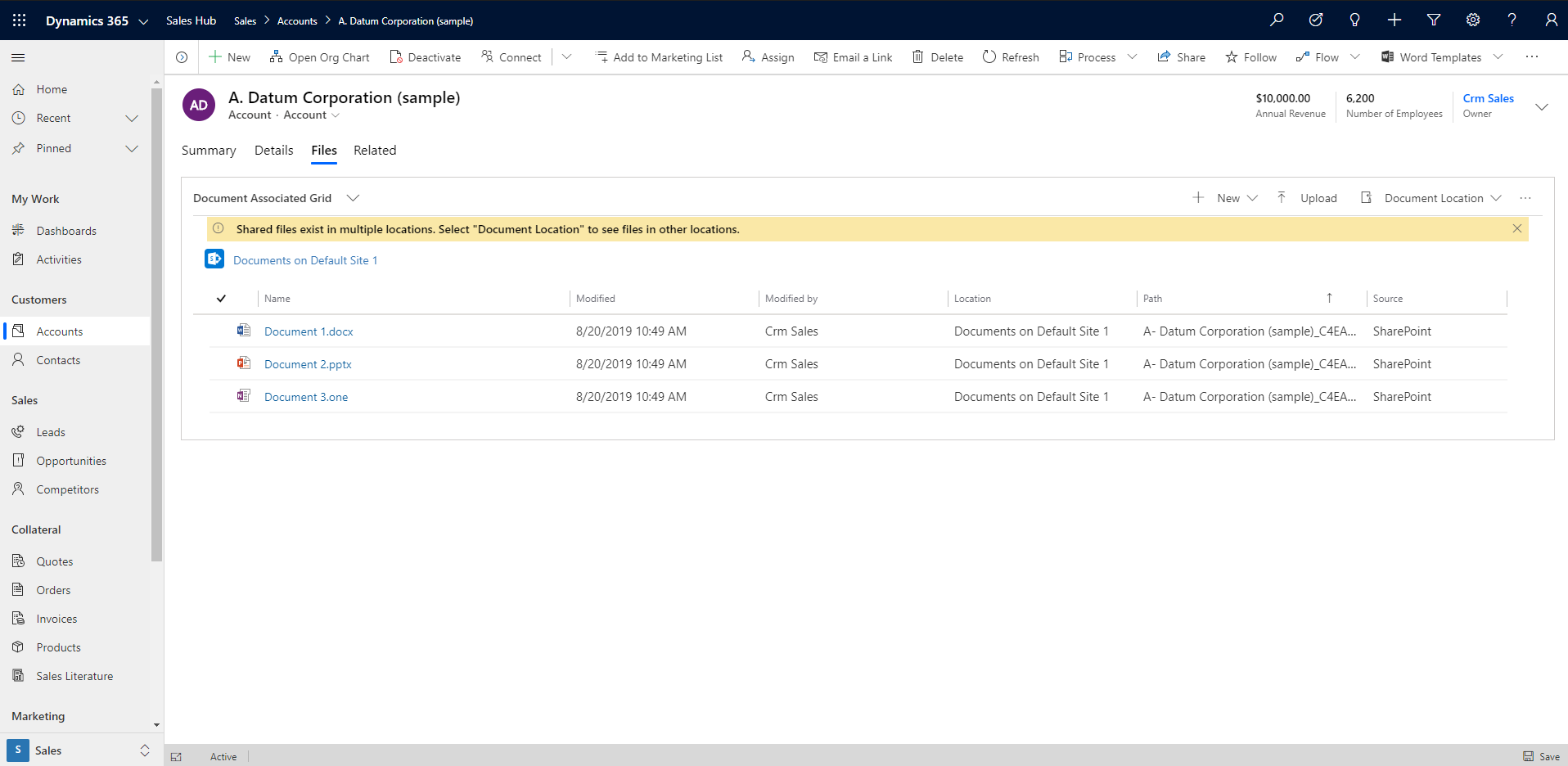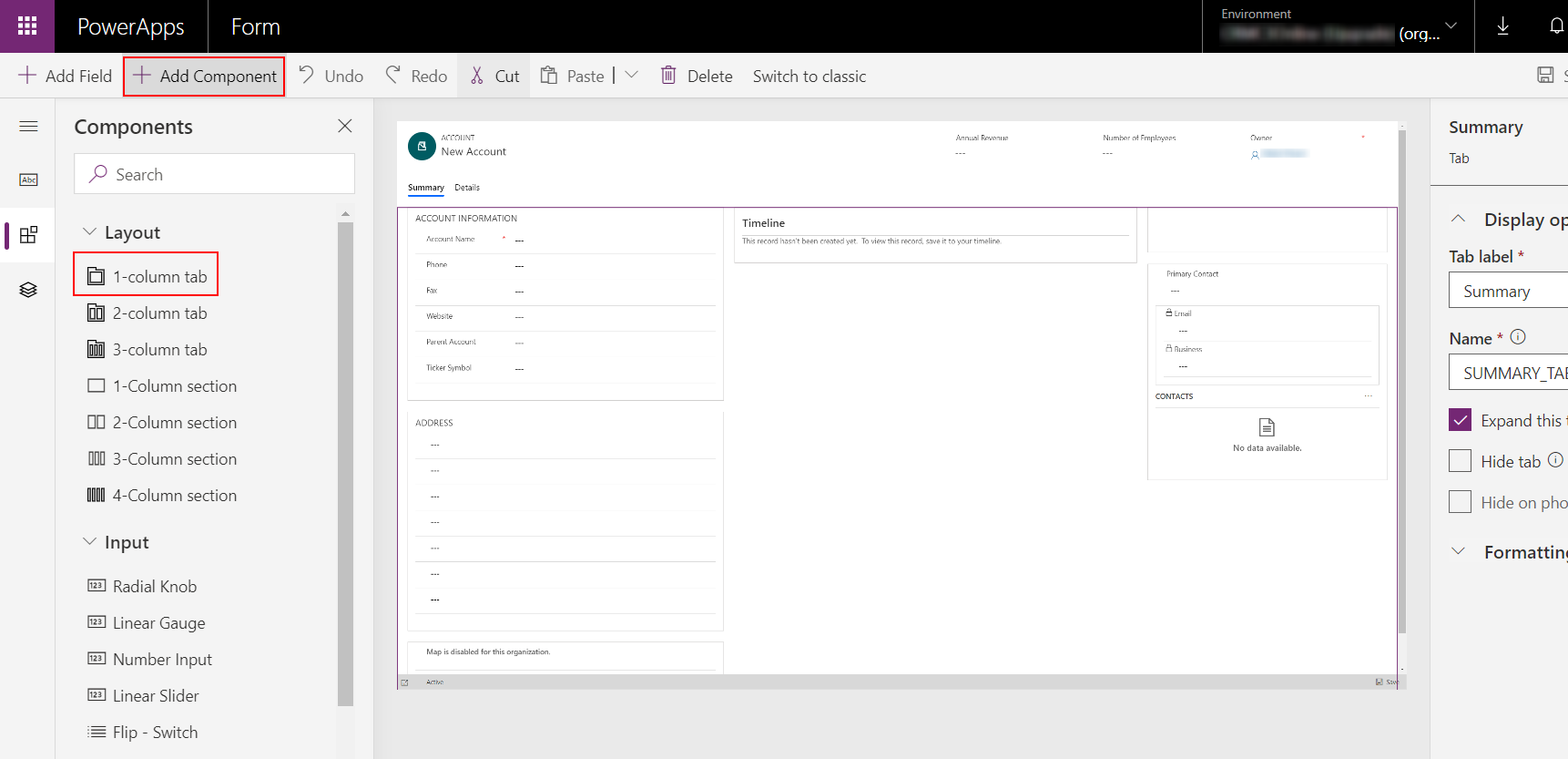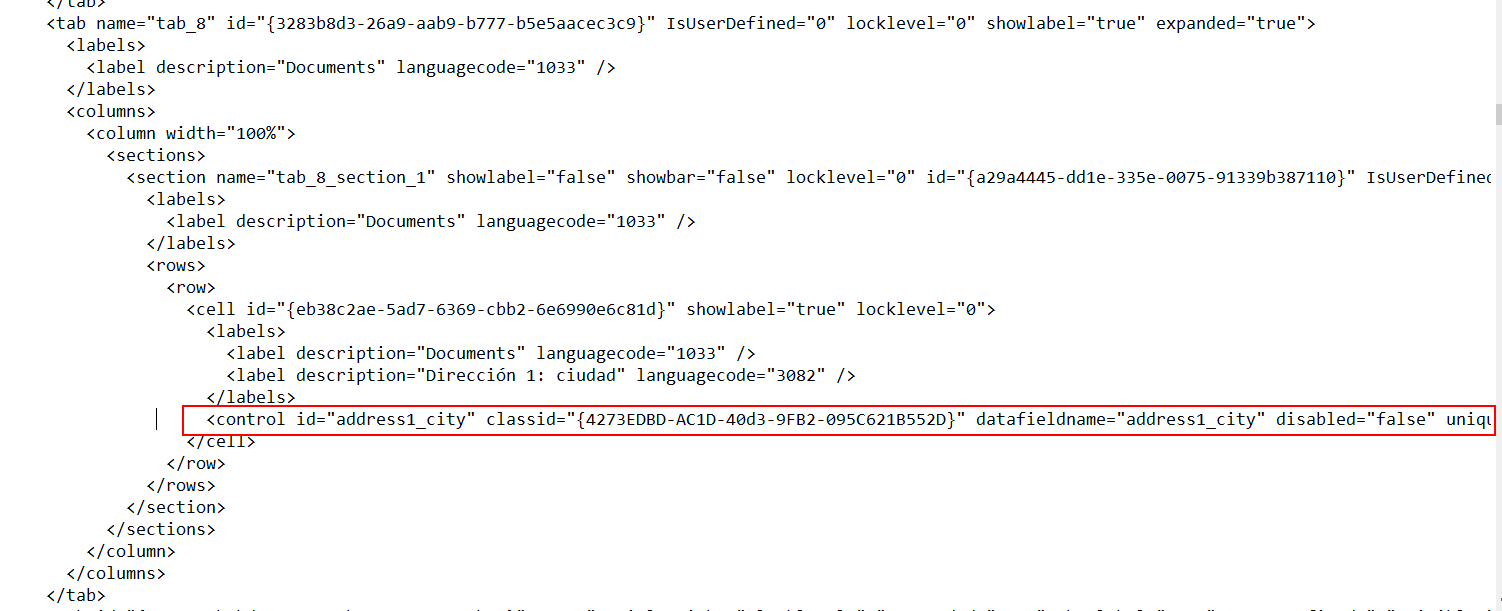Add or remove the SharePoint documents tab to the main form for any table
[This topic is pre-release documentation and is subject to change.]
Adding a tab on a table main form to display SharePoint documents helps users discover and use the SharePoint integration features that are available in a model-driven app.

Important
To use this feature you must enable document management. More information: Manage documents using SharePoint
Add the documents tab in the FormXML
Create a new solution or open an existing solution. For more information on creating solutions see: Create a solution.
Add the table to the solution or select an existing table. All standard and custom tables are supported. For more information on tables in solutions see: Add solution components
Include the form for the table in the solution, such as the main form for the account table. Next to the table, select ..., and then select Edit. Select the Forms area. If the required form is missing then it should be added.
Add a one-column tab to the main form. To do this, in the form designer select an area on the form canvas, select Add Component, and then select 1 Column Tab.

In the form designer select the New Tab on the form designer canvas, select Add Column, and add a column such as Address 1: City from the left pane. Any text or numeric column can be used.

Rename the tab label. To do this, select New Tab, and in the right properties pane replace New Tab with something more descriptive, such as Documents.
Select Save, select Publish, and then close the form designer.
From the Power Apps maker home page, select Solutions, select the solution, and the select Export to export the solution as an unmanaged solution. More information: Export solutions
Extract the solution and open the customization.xml file with an XML or text editor.
In the customization.xml search for label description="Documents" (or the name the tab was given in the previous step).
Scroll down to the control id="field name" element, such as control id="address1_city" and replace the entire element with the XML sample in this topic.

Make these modifications to the XML sample.
a. Locate the RelationshipName element and replace it with the schema name that appears as entityLogicalName_SharePointDocument. For example, for the accounts table the schema name for the relationship is Account_SharePointDocument, which is the schema name for the XML sample in this topic. To find the name for a different table, go to Settings > Customizations > Customize the System > Tables > select the table > select 1:N Relationships. Locate the Related Table of type SharePointDocument.

b. Create a globally unique identifier (guid) and replace the existing uniqueid guid located in the control element pasted in the previous step while preserving the curly braces {}.
 c. Save the changes made to customizations.xml.
c. Save the changes made to customizations.xml.
13.Open the solution.xml file and increment the Version element value. For example, from 1.1.0.0 to 1.2.0.0. 14. Package all solution files into a compressed (zipped) folder and import in to the right environment. If an error appears then the previous solution should be removed. For more information on managing solutions see: Import, update, and upgrade a solution
XML sample for adding the documents tab to a form
<control id="DocumentSubGrid" classid="{E7A81278-8635-4d9e-8D4D-59480B391C5B}" indicationOfSubgrid="true" uniqueid="{9cd66b5c-8b7a-6433-c5a5-46a7245dd534}">
<parameters>
<ViewId>{0016F9F3-41CC-4276-9D11-04308D15858D}</ViewId>
<IsUserView>false</IsUserView>
<RelationshipName>Account_SharepointDocument</RelationshipName>
<TargetEntityType>sharepointdocument</TargetEntityType>
<AutoExpand>Fixed</AutoExpand>
<EnableQuickFind>false</EnableQuickFind>
<EnableViewPicker>true</EnableViewPicker>
<ViewIds />
<EnableJumpBar>false</EnableJumpBar>
<ChartGridMode>Grid</ChartGridMode>
<VisualizationId />
<IsUserChart>false</IsUserChart>
<EnableChartPicker>false</EnableChartPicker>
<RecordsPerPage>10</RecordsPerPage>
<HeaderColorCode>#F3F3F3</HeaderColorCode>
</parameters>
</control>
Remove the documents tab
Sign in to Power Apps, in the left pane expand Data, and then select Tables.
Select the required table and select the Forms area, and then open the form where the documents tab needs to be removed.
Select the Documents tab, and then on the form designer toolbar, select Delete.

On the form designer toolbar, select Publish.
See also
Feedback
Coming soon: Throughout 2024 we will be phasing out GitHub Issues as the feedback mechanism for content and replacing it with a new feedback system. For more information see: https://aka.ms/ContentUserFeedback.
Submit and view feedback for